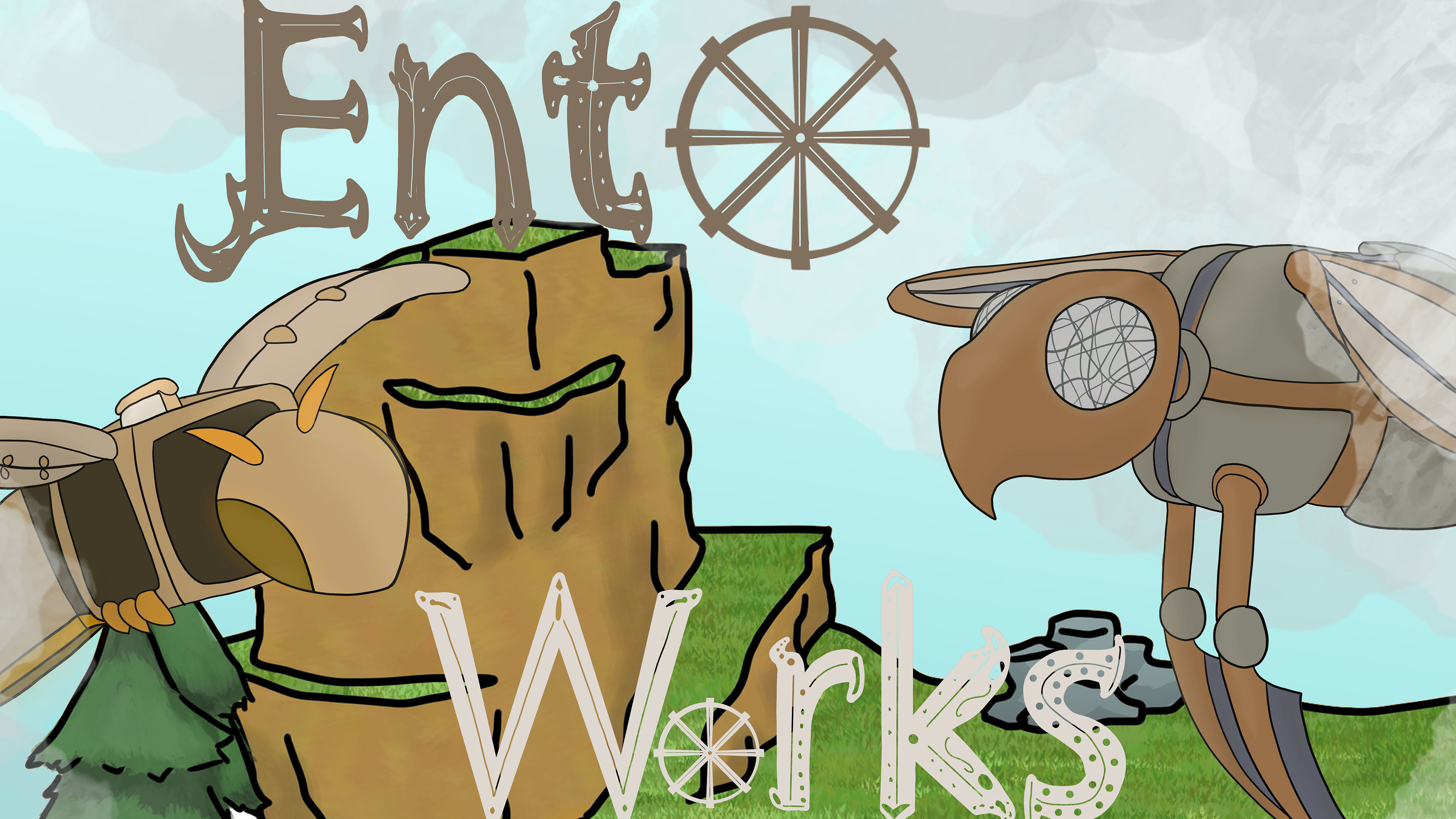Design Blog 1
Hi, welcome to my design blog. I’m Vivian Overbey, an entomophobe who's the lead designer on a game about bugs.
Entoworks is a light-weight turn-based strategy/tactics game about steampunk bugs. What does that mean? glad you asked
- Light-Weight: small in scope, mechanically simple (relatively speaking).
- Turn-based: game functions on turns instead of time based, think Pokémon, Advanced Wars, XCOM, or CIV.
- Strategy: gameplay is focused on strategy, thinking ahead is encouraged.
- Tactics: gameplay functions similarly to other games in this genre, units move on a grid, ties back into strategy with thinking ahead being encouraged. Planning between different units complicates strategy as well.
Additionally, Entoworks is a single player game, and features in-depth unit management. resource management is also a large part of the game, in particular between rounds of combat the player can upgrade their units using resources won from combat.
The first sprint has come and gone for Entoworks, and a lot of design work was done during that time. The first sprint for a designer is often the most important and stressful. The game idea needs to be explained to a group of people, in this case 16 different people, to varying degrees. One of the best ways to do this is a paper prototype. After the producer on Entoworks - Courtney Cochran - pointed this out, I got on it.
The paper prototype is meant to be a simplified version of the game that can be played on paper. This prototype was brought to the first meeting of the team during the sprint. A couple of the programmers played it, specifically the programmers who will be on combat and AI, so probably the most important people to play it. If anybody reading this is curious, here is a link to the resources to play it for yourself. (Note: the prototype is a two player game)
Going into the project, I had a lot of pre-pro done over the summer. This included documents such as a GDD, as well as some tools I programmed, most importantly a level editor. The level editor was designed to allow level designers to create tile based levels way quicker so the quantity of levels and ultimately content in the final game will be greater. Additionally it standardizes what a level will be so programmers know what to expect.
This pre-pro was mostly good, though it did require me to set up the project with the tools created, and required me to explain these tools to both the level designers and programmers. I made a Youtube video about the level editor for the designers that helped a good bit in learning the tool.
After all of the set up, I got to do some somewhat more conventional game designing. Specifically I made a bug list and a biome list.
The bug list is a list of all the bugs we indent to make steampunk robots versions of. In terms of what bugs got on this list, there are about 18, with varying degrees of priority. The list covers a wide array of bugs, but the specific bugs weren’t really super important. Input was taken from team members, and their suggestions were added. This accounted for 2 or 3. The other 15 were added based on some ideas I had during pre-pro for bugs, and some cool bugs I learned about at some point, like the rosy maple moth and the giant vinegarroon.
The biome list is a list of the game’s biomes. A biome refers to a part of the world map the player selects levels from as they progress. Biomes correspond to a set of levels built with a “tileset”, a set of assets that communicate a certain biome or area.
Using the biome list I created a map of the game's progression, as well as prioritizing each biome. The general idea is that the player starts in a grassy area, and progresses through some more natural biomes for the first half of the game, with the second half being in less natural and more man-made biomes. The last biome in the main game, the Leaden Meadows, functions as the final test of the player, and mirrors the first biome in structure.
If we have enough time, a small “post-game” will be added which includes the shimmering depths, sealed lake, and sealed tower. The sealed lake is a reference to the real world Movile cave. The sealed tower is a final optional challenge for players who feel that they have mastered the game.
That is all the particularly notable design work during the first sprint. some documents were written up too, in particular asset lists, but besides that, this is pretty much it. Thanks for reading. I'm looking forward to sprint 2, it should be more interesting.
Get Entoworks
Entoworks
More posts
- Version 1.1.0, Entoworks Overclocked!Dec 15, 2023
- Production Postmortem - EntoworksDec 13, 2023
- Design Blog 6 and Postmortem, Games Done!Dec 07, 2023
- Production Blog 6Nov 16, 2023
- Design Blog 5Nov 09, 2023
- Production Blog 5Nov 04, 2023
- Production Blog 4Oct 26, 2023
- Design Blog 4Oct 26, 2023
- Design Blog 3Oct 12, 2023
- Production Blog 3Oct 11, 2023

Leave a comment
Log in with itch.io to leave a comment.